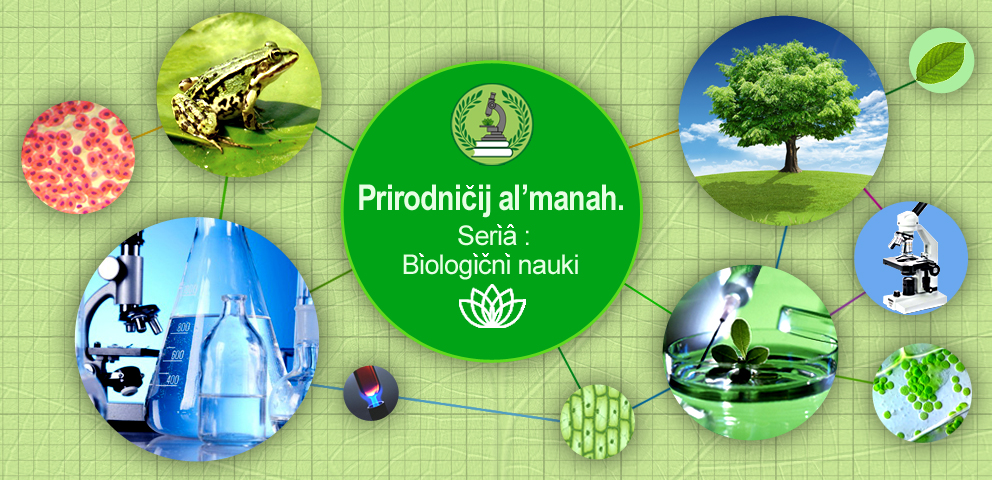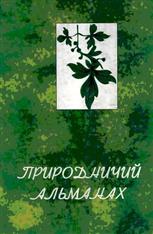INTRA- AND INTERPOPULATION SHELL VARIABILITY OF TERRESTRIAL MOLLUSC BREPHULOPSIS CYLINDRICA FROM THE NORTHERN BLACK SEA COAST REGION
Abstract
The study of the limits of variability of terrestrial mollusks in natural populations and the distribution of the whole spectrum of variability into genetic and ecological components is one of the most important tasks of evolutionary ecology and ecogenetics of these organisms. The authors who studied the malacofauna of this species have repeatedly pointed to the wide range of geographical (interpopulation) variability of conchological characteristics of mollusks of the genus Brephulopsis.
Of particular interest are the features of the populations of the Northern Black Sea coast of Ukraine, where this species is widespread and occupies a variety of geoclimatic characteristics of the territory. The population of the species was first discovered near Lake Solonets-Tuzla near the village Rybakivka of the Berezansky district of the Mykolaiv region.
Based on the measurements data of the shell from the first detected population of B. cylindrica from the vicinity of Lake Solonets-Tuzla (C), the limits of variability of traits were determined. The maximum indicator of the width of the shell from the population of Solonets-Tuzla was the largest among those known in the region, thus influencing the conchological characteristics of the species as a whole.
It has been confirmed that shell indicators are under close genetic control within each individual population. In terms of apex height, no significant differences found between all studied populations. Apex indicators are under a high level of genetic control.
The study of conchological indicators of each newly identified population of terrestrial mollusks allows clarifying the identification indicators of the species. Microevolutionary processes in B. cylindrica populations of the Northern Black Sea coast are active, specific and depend on localization factors. The variety of conditions contributes to the intensification of evolutionary processes in populations and the acquisition of significant differences in conchological characteristics. There is a tendency to approximate the absolute values of shell height in populations located in similar geoclimatic conditions that affect growth processes.
References
2. Лихарев ИМ. Наземные моллюски [горного Крыма] М.; Л.: Изд-во АН СССР, 1958;5. 656 с.
3. Шилейко АА. Наземные моллюски подотряда Pupillina фауны СССР (Gastropoda, Pulmonata, Geophila). Л.: Наука, 1984;3(3) №35. 399 с.
4. Крамаренко СС. Фенотипическая изменчивость крымских моллюсков рода Brephulopsis Lindholm (Gastropoda, Pulmonata, Buliminidae) [диссертация]. К.; 1995. 125 с.
5. Вычалковская НВ. Распространение и внутривидовая изменчивость Крымского эндемичного моллюска Brephulopsis cylindrica (Gastropoda, Pulmonata, Buliminidae) за пределами нативного ареала. Вестник зоологии. 2008;42(3):229–235.
6. Вычалковская НВ. Наземные моллюски Brephulopsis cylindrica (Menke,1828) в Северном Причерноморье (распространение, морфологическая изменчивость и аутэкология): дис. …канд. биол. наук: 03.00.08 / Вычалковская Наталья Валентиновна. К.; 2009. 156 с.
7. Крамаренко СС., Сверлова НВ. До вивчення внутрішньовидової мінливості Chondrula tridens (Gastropoda, Pulmonata, Buliminidae) на заході України та з’ясування таксономічного статусу окремих форм. Наук. Зап. Держ. Природ. Музею. 2003;18:93-110.
8. Лакин ГФ. Биометрия. М.:Высш. шк., 1980. 293 с.
9. Вычалковская НВ. Особенности размножения наземных моллюсков Brephulopsis cylindrica (Pulmonata, Buliminidae) в лабораторных условиях. Вестник зоологии. 2005;39(3):77–83.
10. Вычалковская НВ. Размерно-ассортативное скрещивание в популяции наземного моллюска Brephulopsis cylindrica (Buliminidae). Вісник проблем біології та медицини: Український науково-практичний журнал. Полтава: ВДНЗУ «УМСА». 2011;3 1(87):25-27.
11. Arad Z., Goldenberg S., Heller J. Intraspecific variation in resistance to desiccation and climatic gradients in the distribution of the bush-dwelling land snail Trochoidea simulate. Journal of Zoology. 1993;229:249-265.
12. Machin J. Structural adaptation for reducing water-loss in the three species of terrestrial snail. Journal of Zoology. 1967;152:55-65.
13. Riddle WA. Physiological ecology of land snails and slugs. The Mollusca. London: Academ. Press. 1983;6:431-461.

